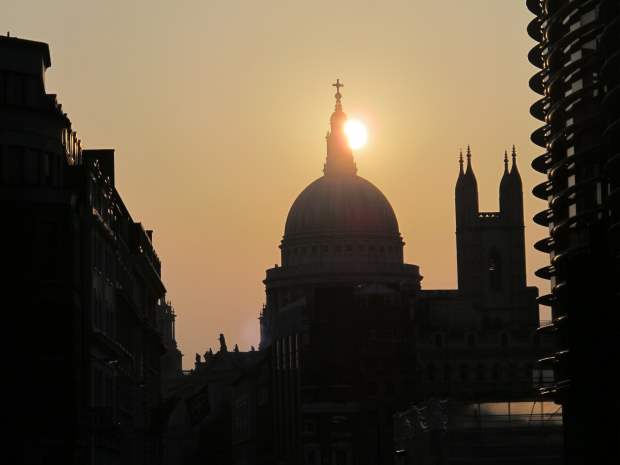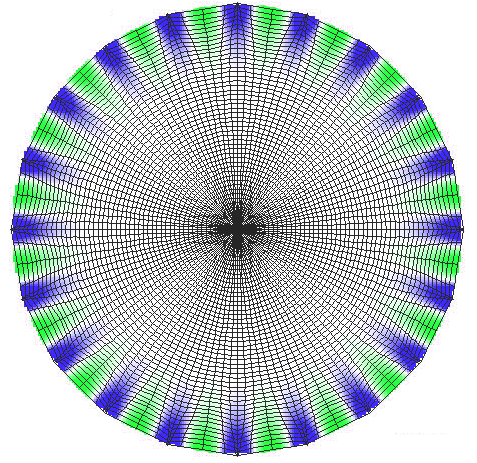
Lesson 3: 3D resonances and whispering gallery modes
lesson 1 lesson2 lesson 4 lesson 5
Well, as you might expect by now, we can have 3-dimensional resonances too. A good example is sound resonating in a chamber. Wind instruments work this way, but so do everyday chambers such as rooms and galleries. Just like 1D strings and 2D surfaces could resonate, so can 3D spaces.
Take an everyday bedroom: for example. There are a certain set of acoustic frequencies that correspond to a 3D audio resonance of the room. This is also a standing wave - this time the nodes exist as planes throughout the 3D geometry of your room. The problem is, though, that normal rooms are bad resonators. They're lossy - in other words, a lot of acoustic energy is scattered or transmitted outside and the resonance dies off very quickly, making it hard to perceive.
But some chambers have incredible acoustic resonance effects. The most famous example is shown below:

Photo by Ross Lockwood
This is St. Paul's cathedral, in London, UK. My previous student Ross Lockwood took this impressive photo after attending a scientific conference in Europe.
About 30 meters from the cathedral floor, there is a gallery with a 32-m diameter at which the acoustic resonance effect is especially strong. There, a whisper at one side of the gallery can easily be heard by a listener at the other side, exactly as if someone was speaking into your ear. Over 100 years ago, Lord Rayleigh used then-new mathematical methods to show that the acoustic energy can get confined very close to the wall of the gallery (with virtually none in the center). They actually used candle flames to measure that, back in 1910.
Just like standing waves on a string or on a flat surface, many different "chamber" resonant frequencies exist. Once again, each resonance corresponds to a particular sound frequency, which becomes amplified - while non-resonant frequencies are lost to destructive interference.
This was when the term "whispering gallery mode" was coined. The word "mode" just means a "resonance". Just think of Lord Rayleigh wandering about the whispering gallery with his candle and notebook, over 100 years ago!
The image below is from Wiki commons. Someone - not me this time - calculated an acoustic resonance of the cathedral at a frequency of 69 Hz (that's a deep audible pitch). The image shows a cross section of the whispering gallery. The green and red regions represent pressure maxima and minima that essentially oscillate back and forth like the waves on a string. Notice that here, the resonance must "stop" at the walls of the gallery. The boundary is said to be "fixed".

Now we can go on to the ultimate topic: optical whispering gallery modes.